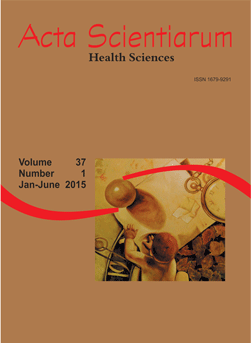<b>Investigation <em>in vivo</em> of <em>Enterococcus faecalis</em> in endodontic retreatment by phenotypic and genotypic methods
Resumo
This study aimed to investigate the prevalence of E. faecalis in root-filled canals using culture and molecular approaches. It was evaluated the antimicrobial susceptibility to different antibiotics and the virulence factors of E. faecalis isolates. Microbial samples were taken from thirty root-filled canals. Culture methods and 16S rDNA assay were used to identify E. faecalis. The antimicrobial susceptibility of E. faecalis was determined by MIC values using the E test. Cultivable strains of E. faecalis were investigated for virulence factors by PCR technique. E. faecalis were detected by culture (7/30), traditional PCR assay (13/30) and nested PCR (23/30). Both PCR were significantly more effective than culture in detecting E. faecalis (p < 0.05). All tested E. faecalis were highly sensitive to amoxicillin. Some strains of E. faecalis were resistant to antibiotics such as rifampicin (4/12), erythromycin (3/12) and azythromycin (8/12). The genes efaA and ace were detected in all isolates. The other virulence genes were found in 91.6 (gelE), 83.3 (asa), 25 (esp) and 16.6% (cylA). Strains of E. faecalis isolated from root-filled canals showed virulence factors related to adherence. They also showed resistance to some antibiotics commonly used in dentistry.
Downloads
DECLARAÇÃO DE ORIGINALIDADE E DIREITOS AUTORAIS
Declaro que o presente artigo é original, não tendo sido submetido à publicação em qualquer outro periódico nacional ou internacional, quer seja em parte ou em sua totalidade.
Os direitos autorais pertencem exclusivamente aos autores. Os direitos de licenciamento utilizados pelo periódico é a licença Creative Commons Attribution 4.0 (CC BY 4.0): são permitidos o acompartilhamento (cópia e distribuição do material em qualqer meio ou formato) e adaptação (remix, transformação e criação de material a partir do conteúdo assim licenciado para quaisquer fins, inclusive comerciais.
Recomenda-se a leitura desse link para maiores informações sobre o tema: fornecimento de créditos e referências de forma correta, entre outros detalhes cruciais para uso adequado do material licenciado.























5.png)







